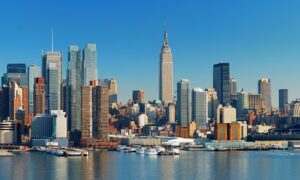Part 2
Doing Business in the Middle East: Do not miss these key investment opportunities in these countries!
Algeria
The largest Arab Country, the richness of Algeria lies in its huge surface area. It’s almost 2 million km2 (almost one million miles2). Algeria has 38.7 million inhabitants, with 64% of its population aged between 15 and 59.
Although an increasing number of foreign investors are moving into Algeria, it is still a weak exporter.
The country has many rich natural resources, as OPEC ranks it as having the 10th largest resource of natural gas in the world, as well as being 6th largest gas exporter – but only 16th in terms of oil reserves. Algeria has a cushion of $173 bn in foreign currency reserves and a large hydrocarbon stabilisation fund.
Potential key investment areas
- Safety & security equipment
- Transport
- Telecommunications
- Energy
- Healthcare
- Fishery
- Tourism
- Oil
- Pharmaceutical industry
Palestine
Against all odds, Palestine is still a place where investors can find profitable opportunities. A report by the World Bank about the economic situation in Palestine explained that following robust growth in previous years, economic activity in Palestine has been on a downward path since 2012.
Growth over the last few years has mainly been driven by large inflows of donor aid that has enabled the expansion of the public sector, resulting in consumption driven growth. Decomposition of recent growth trends indicates that the contribution of government-funded services to the economy has been on the rise, while the share of trade sectors has declined, mainly due to the ongoing Israeli restrictions on movement, trade, and access to Area C. Two studies were conducted regarding the potential for investment in Palestine «A Palestinian Private Sector Initiative for Investment, Growth and Employment « published by Portland Trust, and more recently, «The Initiative for the Palestinian Economy» by The Office of the Quartet in Jerusalem.
Palestine’s population reached 4.17 million: 2.58 million in the West Bank and 1.59 million in the Gaza Strip. In In 3Q2013, Palestinian GDP was 2.6% higher than in In 3Q2012 in real terms, but decreased by 1.3% with respect to the previous quarter. In 2012, unemployment amongst young people reached 39%.
Potential key investment areas:
- Tourism
- Light manufacturing
- Information communication technology
- IT & Digital Entrepreneurship
- Agriculture
- Energy
- Construction (see our special report in this issue)
- Building materials
- Water
- Agriculture
Egypt
With a population of over 80 million and GDP of $257 bn, the Egyptian economy is one of the largest in the Middle East and North Africa. Egypt has traditionally been an attractive market for US companies, thanks to its unique mix of demographics and commercial links to the broader world, as well as a demonstrated ability to provide companies with a platform for their commercial activities throughout the Middle East. It is however, suffering from a post-revolution economic slowdown and political instability, causing many to withdraw personnel for security reasons.
Potential key investment areas:
- Construction/Engineering
- Architecture
- Education/Training services
- Electrical power systems
- Medical equipment
- Port shipbuilding
- Renewable energy
- Security & safety
- Telecommunications
- Water equipment, resources & services
- Tourism
Jordan
Jordan, a country of 6.5 million people, enjoys an exceptional geographical location and is increasingly becoming a regional hub for trade and investment for neighbouring countries. Despite the challenging political situation in the area, as mentioned in some of our other articles, Jordan has been very stable for business and investment. Jordan enjoys strong ties with its neighbours and the wider international business community. The Government of Jordan introduced several laws that provide various benefits to investors, giving a clear signal of the Government’s commitment to its future success in enhancing the country’s business environment. (Please also refer to our article in this issue on Jordan’s economy).
Potential key investment areas
- Renewables & Solar energy
- Information Communication Technology
- Healthcare/Medical equipment/Medical tourism
- Environment Technology/Water
- Safety & security
- Training & capacity building
- Tourism
- Construction (see our special report in this issue)
Lebanon
Lebanon, a country of 4.2 million people, has an economy based on competition and private ownership. 70% of the country’s GNP depends on services and banking sectors which are predominant. Agriculture constitutes 10% and the industrial sector the remaining 20%. The Lebanese economy is based primarily on the service sector, which accounts for approximately 60% of GDP. Other subsectors are commerce, tourism, health care, higher education and financial services. On the energy level, 1.7 billion barrels of recoverable oil and 122 trillion ft3 of recoverable gas exists in the Levant Basin Province.
However, Lebanon currently faces many challenges including high levels of public debt, complex customs procedures, high taxes and fees, a lack of adequate intellectual property protection, frequent electricity cuts (although the government is investing $1.2 bn in this field) and an ineffective judicial system. (Please refer to our article in Issue 2 if you wish to read more).
Potential key investment areas:
- Transport
- Medical equipment
- Electricity
- Telecommunications
- Automotive
- Dam building
- Waste water projects
- Oil & Gas
Libya
Libya is a vast country with a relatively small population of 6.5 million people, and enjoys over 2000 kilometers (1200 miles) of Mediterranean coastline. Nevertheless, the Libyan economy has been dominated by the energy sector and dependent on oil revenues which contributes 90% of export earnings, one quarter of GDP. Security is still the major challenge for the new government. Libya is in need of extensive infrastructure development.
Regarding the political instability, there has been no real progress towards drafting a new constitution, and no progress in formulating a strategy to stimulate the non-oil economy plus a failure to create a plan for sustainable, diversified, private sector-led growth.
Potential key investment areas:
- Infrastructure development
- Oil & Gas
- Transportation
- Healthcare/Medical equipment
- Electrical power generation
- Telecommunications
- Safety & security
Morocco
Morocco is considered to be a regional hub in North Africa. With a population of 33 million and a long coastline reaching 3,500 kilometers (2,750 miles).
Morocco’s GDP has risen to 4.7% compared with 2.7% in 2012, despite the slowdown in world growth, due mainly to a vibrant agricultural sector. According to the report published by the High Commission for Planning, responsible for managing the national statistical system, the first quarter of 2014 showed a slower pace of growth for the national economy, standing at only 1.7% instead of 3.8% during the same period of 2013. According to the African Development Bank Group, overall performance in Morocco has been encouraging and benefited from political and social stability. Morocco moved up eight places in the annual World Bank “Doing Business” report, reaching 87th in one year. In 2013, the country witnessed improved tourism revenues of 2%, in addition to a significant increase in foreign direct investment.
Morocco should further benefit from two key trade agreements to stimulate economic growth and to foster job creation; the first with the EU (Association Agreement) and the second (Free Trade Agreement) with the United States that has been in place since 2006. (Please see our article about Morocco in Issue 2).
Potential key investment areas:
- Transport
- Alternative energy
- Infrastructure development
- Franchising
- Environmental technology
- Automobile
- Industrial zones
Tunisia
Tunisia is a country of 10 million inhabitants and is the smallest country on the North African coast. It has one of the most diversified economies in the region and enjoys high living standards. The country does not have vast reserves of hydrocarbons like its neighbours, Algeria and Libya.
However, it has prospered under long-standing government policies to develop manufacturing, tourism and agriculture, largely by establishing a business climate that is open to foreign investment and trade. Tunisia has a wealth of human capital with a well educated population.
The economy grew in 2012 by 3.6% and unemployment fell to 15.3%. In 2013, the external current account deficit remained high at 8.2%, with the trade balance deficit standing at 13.4%.
Potential key investment areas:
- Telecommunications
- Electrical Power Systems
- Renewable Energy
- Aircraft/Airport Ground Support/Aeronautics
- Automotive Parts/Services/Equipment
- Architecture/Construction/Engineering services
- Tourism
Read part 1: https://middleeast-business.com/key-investment-opportunities-not-to-be-missed/
———————————————
Sources:
Office National de l’Algerie
National Agency for Investment
American Chamber of Commerce
Portland Trust – Beyond Aid Study – Palestine
Quartet Office – East Jerusalem: Economic Initiative in Palestine
Ministry of Economy and Trade – Lebanon
World Bank – Libya overview
African Development Bank Group
Palestine Central Bureau of Statistics
Moroccan Investment Development Agency
Moroccan High Commission for Planning
European Commission website
http://www.invest.gov.ma/?lang=en&Id=3
http://www.afdb.org/en/countries/north-africa/morocco/morocco-economic-outlook/



























